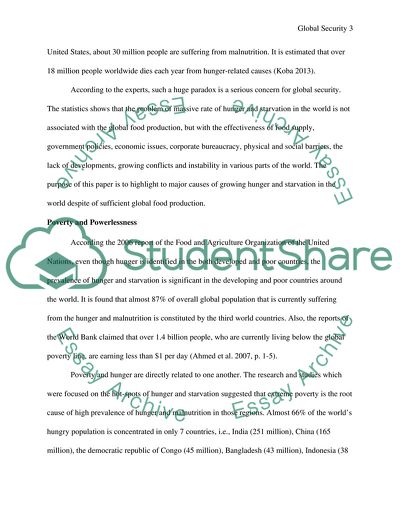Cite this document
(Global Security: Causes of Growing Hunger and Starvation Coursework Example | Topics and Well Written Essays - 3250 words, n.d.)
Global Security: Causes of Growing Hunger and Starvation Coursework Example | Topics and Well Written Essays - 3250 words. https://studentshare.org/social-science/1855238-global-security
Global Security: Causes of Growing Hunger and Starvation Coursework Example | Topics and Well Written Essays - 3250 words. https://studentshare.org/social-science/1855238-global-security
(Global Security: Causes of Growing Hunger and Starvation Coursework Example | Topics and Well Written Essays - 3250 Words)
Global Security: Causes of Growing Hunger and Starvation Coursework Example | Topics and Well Written Essays - 3250 Words. https://studentshare.org/social-science/1855238-global-security.
Global Security: Causes of Growing Hunger and Starvation Coursework Example | Topics and Well Written Essays - 3250 Words. https://studentshare.org/social-science/1855238-global-security.
“Global Security: Causes of Growing Hunger and Starvation Coursework Example | Topics and Well Written Essays - 3250 Words”. https://studentshare.org/social-science/1855238-global-security.


